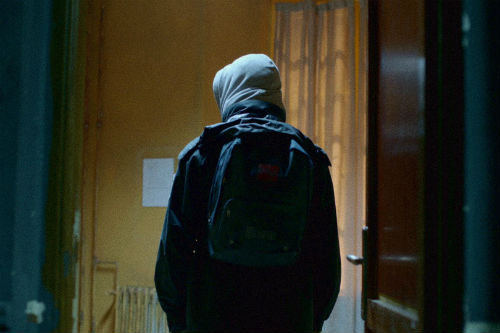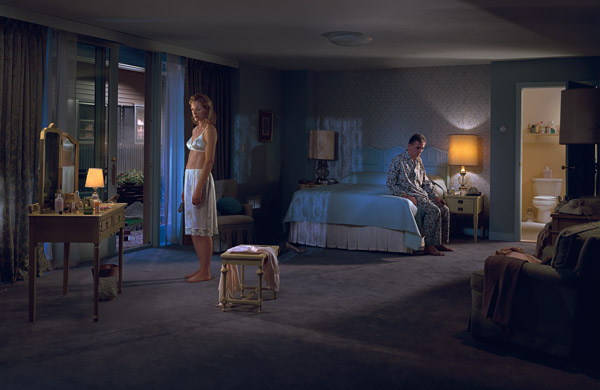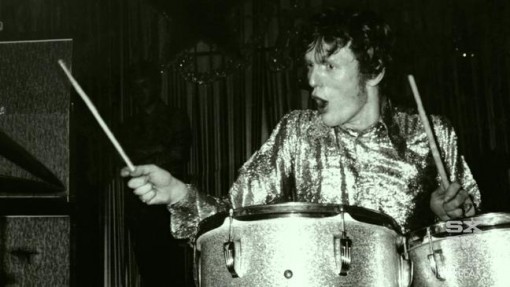Film Review: The Independent Film Festival of Boston — Ten Movies To Look For
The Independent Film Festival of Boston has achieved a reputation as one of the hippest in the country because of the dedication of its small and dedicated staff, an army of well-trained volunteers, and audiences full college students, artists, art lovers, and cinephiles.
By Tim Jackson
Film festivals have become a great way to see films that are sometimes overlooked or that end up receiving limited distribution. As if that is not enough, The Independent Film Festival of Boston, which just celebrated its 10th year to packed houses, encourages audiences and filmmakers to interact. Unlike Netflix, iPads, or cell phones, conversations begin when the lights come up. Some 96 films screened for eight days with a slew of filmmakers in attendance.
The festival has achieved a reputation as one of the hippest in the country because of the dedication of its small and dedicated staff, an army of well-trained volunteers, and audiences full college students, artists, art lovers, and cinephiles.
Here is a random selection of ten of the many films that I saw last week, which may or may not be coming to a theater near you.
If you were at the festival and would like to recommend something, please feel free to write about your pick in the comments section!
Sleepwalk With Me
This opening night film, based on Mike Birbiglia’s one-man show, My Best Friend’s Girlfriend, was a perfect opening night choice for a sold-out crowd filled with 20- and 30-somethings eager to cheer a film about the convolutions of the comedian’s love life and his non-commitment to marriage. Ira Glass, host of NPR’s This American Life and one of the movie’s producers, was hilarious, spontaneous, and conversational with the rapt audience. This is a quirky, personal comedy about a struggling comedian who has some serious sleepwalking issues—it is pretty much Birbiglia’s own story, which I also saw as a one-man stage show in NYC last year. The comedian directed a great cast that included the brilliant Lauren Ambrose as the girlfriend.
Liberal Arts
I confess to not knowing Josh Radnor from his hit TV series How I Met Your Mother but will check it out after seeing his second feature as writer, director, and star (following Happythankyoumoreplease). Radnor plays a college admission counselor who visits his alma mater to celebrate his former professor’s retirement (Richard Jenkins) and slowly falls for a precocious, younger student (Elizabeth Olsen).
I went to see Liberal Arts because of Olsen, who was so good in last year’s Martha Marcy May Marlene, and was pleasantly surprised to see that the film is more than your standard older man/younger women romance. Liberal Arts neatly uses its characters to meditate on the wisdom, satisfactions, and troubles of life as one ages. Along with Jenkins, there is Alison Janney as a cold, over-sexed professor of English Literature and Elizabeth Reaser as an introverted bookstore owner. Literature, reading, books, and ideas unite all the characters, bringing a fresh perspective to a story that is also buoyed by several effortless and natural performances.
The Imposter
This is an amazing story that I read about in the New Yorker in 2008. Nine-year-old Nicholas Barclay went missing from his San Antonio home in 1994. Three years later he appears to have resurfaced in Spain. But the new Barclay is an imposter. Despite the physical dissimilarities between the kids, the family takes the “new” Nicholas in without too many questions until a potbellied, Texas private eye named Charlie Parker begins to look into it.
An unlikely tale of love, murder, family, crime, and intrigue, The Imposter is naturally compelling. The documentary centers on interviews with the imposter, Frédéric Bourdin, who is also cast in several reenactments. The film owes much of its style to Errol Morris’s.
For me, the problem with The Imposter is partly ethical. Using the hustler as the central narrative voice is troubling and makes us question the filmmaker’s point of view. Knowing that the man is an imposter from the start undermines some of the suspense. Worse, the missing child is given short shrift. Toward the end, unanswered questions are raised about the family itself, though they seem rushed and possibly contrived. Nevertheless, it’s a whopper of a yarn and slickly produced. The story was been made into a little-seen narrative film called The Chameleon.
Gregory Crewdson: Brief Encounters and Time Zero: The Last Year of Polaroid Film
It’s interesting that these two films were screened at the festival. They represent two ends on the photography spectrum. For fans and aficionados of the Polaroid instant picture, the appeal is to freeze a single moment, generating a collection of unaltered and unique “analog” moments squared off in little, white frames. In a world overrun by pixels and code, this experience is irreplaceable. In the future, the sudden demise of Polaroid instant film will be seen as a tragic moment for our culture.
Gregory Crewdson, on the other hand, shoots images that are carefully conceived and meticulously staged for landscape cameras, shot up to 50 times, layered and manipulated in post-production, and then printed in large format. His shoots are the equivalent of movie productions with klieg lights, set designers, painters, costumers, and “actors.” Instead of calling “Action,” the command is “Ready, hold.” The result is the creation of an elaborately detailed sociological and psychological mythical moment.
As a film, Gregory Crewdson: Brief Encounters is a clear, unencumbered look into one man’s creative process, eschewing from opening any speculative baggage about his journey as an artist. It touches lightly on his influences (from Cindy Sherman to Psycho) and glances at his family and personal history (he was in a briefly successful rock band) but sticks to the fascinating process by which he creates these stunning images. We get to see them in full screen high-definition.
Time Zero: The Last Year of Polaroid Film is a sad but fascinating document that, I hope, will encourage the return of some sort of instant format. It is limited by the decision to bemoan the lost of instant film without talking about the Polaroid image as an art form. Some interesting artists and personalities are here (John Waters is a hoot, as always), but where are Elsa Dorfman and the artists of the large-scale Polaroid image? Still, the film looks terrific and is an important document about a one-of-kind American cultural experience. Bring back instant film!
OK, Good
The title recalls that horrid phrase heard by every actor at the end of an audition, whether it’s for a Harold Pinter play or a pizza shop commercial and whether you were brilliant or embarrassing. If you have ever done these auditions, you will squirm mightily. Director Daniel Martinico and Hugo Armstrong, as the struggling actor Paul Kaplan, take an up-close and very personal look at an actor who is unhinged as he goes through the trying moments of his daily routine. We go from Kaplan’s sparse and functional apartment to auditions, where he creates isolated moments of emotional unreality for commercial products and acts in workshops where performers pay to scream and thrash about, supposedly to expand their emotional range and sharpen their acting “instrument.”
It’s a wonderful festival film whose bold shooting style illuminates, in unpredictable ways, the neurotic world of the L.A. actor. Director Martinico has created short films and video art: his artful sense of story, composition, and pace are admirably individual. Recommended for actors—but only if you’re having a really good day.
From Nothing Something
This is the most wide ranging of the documentaries about the creative process. Through overlapping interviews, director Tim Cawley profiles 13 individuals who talk about their craft. It features Brookline, MA novelist Tom Perotta, who was in attendance along with the director. In addition to Perotta, Cawley spoke with a leading architect, creature designer, composer, comedian, choreographer, an editorial cartoonist, an artist, a video game designer, a singer/songwriter, a pair of chefs, cancer researchers, and fashion designers. The film provides insights into the inspiration, insecurities, obsessions, habits, and methods of a broad range of creative thinkers. We discover surprising commonalities among these different talents. It’s beautifully shot, and the subjects themselves are fascinating.
Beware of Mr. Baker
Any movie that starts with the filmmakers’ nose being broken by his subject can’t be all bad. Such is the world of Ginger Baker, drummer and madman. His excesses are legendary but at age 72, smoking 5 packs of cigarettes a day, he drums on. This is an uncompromising adventure, led by filmmaker Jay Bulger, into the life of a former member of the band Cream who, until recently, made his home in Nigeria.
From his leather armchair, Baker unapologetically recounts a life lived on the edge of disaster and filled with romance. It is an exceeding well done bio-pic, with remarkable archival footage and music, chock full of stories and interviews with Eric Clapton, Steve Winwood, Charlie Watts, Mickey Hart, Carlos Santana, Max Weinberg, Chad Smith, Femi Kuti, Neal Peart, Simon Kirke, Marky Ramone, and others. He has lived his life on a scale that exceeds most anything you can imagine. In his talk-back after the screening, Bulger intimated there is probably another entire movie on the cutting room floor. Remarkable!
Beauty is Embarrassing
This is another exploration of an artist’s life and maturation process. Wayne White created many of the puppets and several voices for the TV show Pee Wee’s Playhouse. But his roots were in Chattanooga, where as boy he had a gift (which became an obsession) for drawings that spark joy and humor. Similarly, director Neil Berkeley, working with White, has created a joyful, cinematic document about ambition, obsession, and family. Following the success of Pee Wee’s Playhouse, White continued to grow as an artist and to exert significant influence on popular culture via music videos, commercials, and television programs. Both the director and White fielded questions at the screening.
Paul Williams: I’m Still Alive
This was the third documentary in which a director insinuated himself into the life of his subject for the sake of gaining greater insight. Director Stephen Kessler became obsessed with Paul Williams, a diminutive, blond personage who was everywhere on television in the 70s and 80s. He is also the composer of such hit songs as “Evergreen” and “Rainbow Connection.” Today, Williams tours occasionally, serves as the president of ASCAP, and focuses more on his life as a recovered alcoholic and drug user than on wallowing in nostalgia for his bizarre past. Williams appears to be a happy and sober person.
Thus director Kessler found himself having to make his own obsession and awkwardness as a fan and filmmaker a significant part of the story. The results are very funny. During the Q&A, Kessler was asked if he is still close to Paul Williams. He said he believes that he is and proceeded to call Williams on his cell phone in Los Angeles from the stage. Williams answered and the audience cheered!





Your comment, “Time Zero: The Last Year of Polaroid Film is a sad but fascinating document that, I hope, will encourage the return of some sort of instant format” leads one to believe that you didn’t watch the film given the fact that the final 3rd is all about The Impossible Project – a company that saved the last Polaroid factory and has been producing new instant film for 2 years!
http://www.the-impossible-project.com/
What? No superheroes?